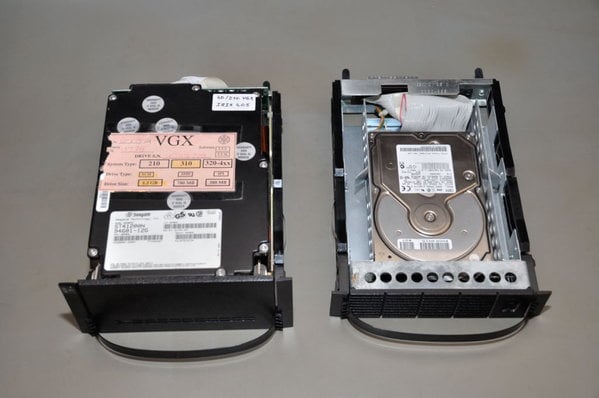hinv -v
gfxinfo -v
This is the system that had a broken power supply a couple of weeks ago. As you can see, this problem has been fixed
When I got this one it was a 4D/420 and it had only a 5 span VGX.
System is in perfect running condition, with complete and perfect looking skins.
The following upgrades are in the pipeline (I have the parts, but haven't had the time to install and test them):
* VME FDDI network board
* VME dual differential scsi board
* Upgrade MC2 to 256MB RAM.
At that time I may have to upgrade it to IRIX 5.3 also. Not that I want to, but I don't have the drivers for the FDDI and SCSI board for IRIX 4.x. For IRIX 5.3 they're all on the CD, but for IRIX4 they were on seperate discs and of course these are long gone. Even SGI can't seem to find them anymore
In this configuration, with two 5.25" full height harddisks it consumes about 875 Watts electricty, or about 2.35 EUR/day
Code: Select all
4 40 MHZ IP7 Processors
FPU: MIPS R2010A/R3010 VLSI Floating Point Chip Revision: 4.0
CPU: MIPS R2000A/R3000 Processor Chip Revision: 3.0
On-board serial ports: 2 per CPU board
Data cache size: 64 Kbytes
Instruction cache size: 64 Kbytes
Secondary data cache size: 1 Mbyte
Main memory size: 64 Mbytes
I/O board, slot F: IO3
Integral Ethernet: et0, IO3
VGX Graphics option installed
Tape drive: unit 7 on SCSI controller 1: QIC 150
Disk drive: unit 3 on SCSI controller 1
Integral SCSI controller 1: Version WD33C93A, revision 9
CDROM: unit 6 on SCSI controller 0
Disk drive: unit 1 on SCSI controller 0
Integral SCSI controller 0: Version WD33C93A, revision 9
gfxinfo -v
Code: Select all
Graphics board 0 is "VGX" graphics.
Managed (":0.0") 1280x1024
10 spans, IMP3
EV mask = 0x0
1 screen(s) on this pipe
This is the system that had a broken power supply a couple of weeks ago. As you can see, this problem has been fixed

When I got this one it was a 4D/420 and it had only a 5 span VGX.
System is in perfect running condition, with complete and perfect looking skins.
The following upgrades are in the pipeline (I have the parts, but haven't had the time to install and test them):
* VME FDDI network board
* VME dual differential scsi board
* Upgrade MC2 to 256MB RAM.
At that time I may have to upgrade it to IRIX 5.3 also. Not that I want to, but I don't have the drivers for the FDDI and SCSI board for IRIX 4.x. For IRIX 5.3 they're all on the CD, but for IRIX4 they were on seperate discs and of course these are long gone. Even SGI can't seem to find them anymore

In this configuration, with two 5.25" full height harddisks it consumes about 875 Watts electricty, or about 2.35 EUR/day
To accentuate the special identity of the IRIS 4D/70, Silicon Graphics' designers selected a new color palette. The machine's coating blends dark grey, raspberry and beige colors into a pleasing harmony. (
IRIS 4D/70 Superworkstation Technical Report
)











 SGI Indigo 2 R8K75 TEAL Extreme 256MB,
SGI Indigo 2 R8K75 TEAL Extreme 256MB,
 SGI Indigo 2 R10K 195 Solid Impact 256MB, MAX Impact Pending
SGI Indigo 2 R10K 195 Solid Impact 256MB, MAX Impact Pending